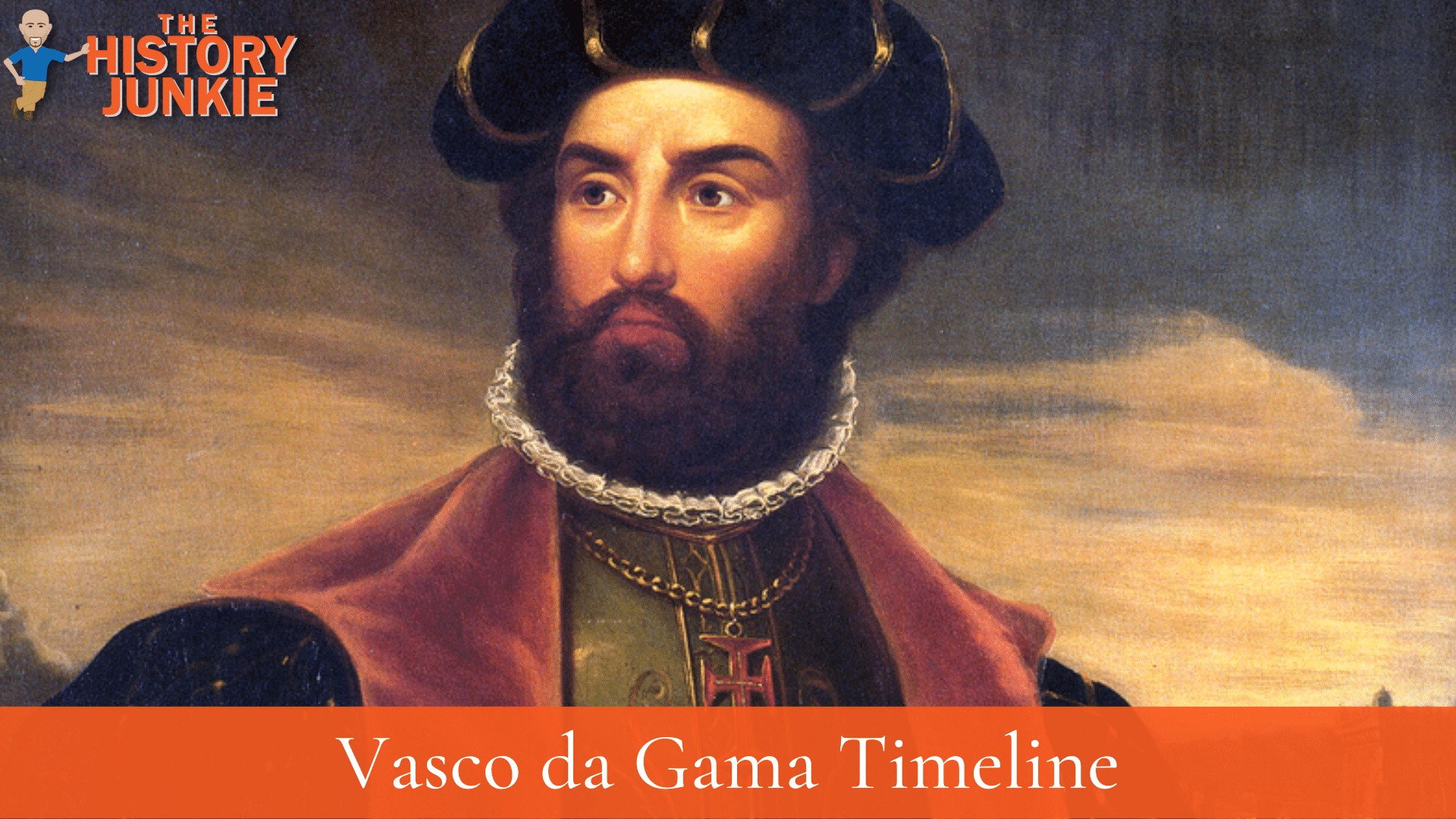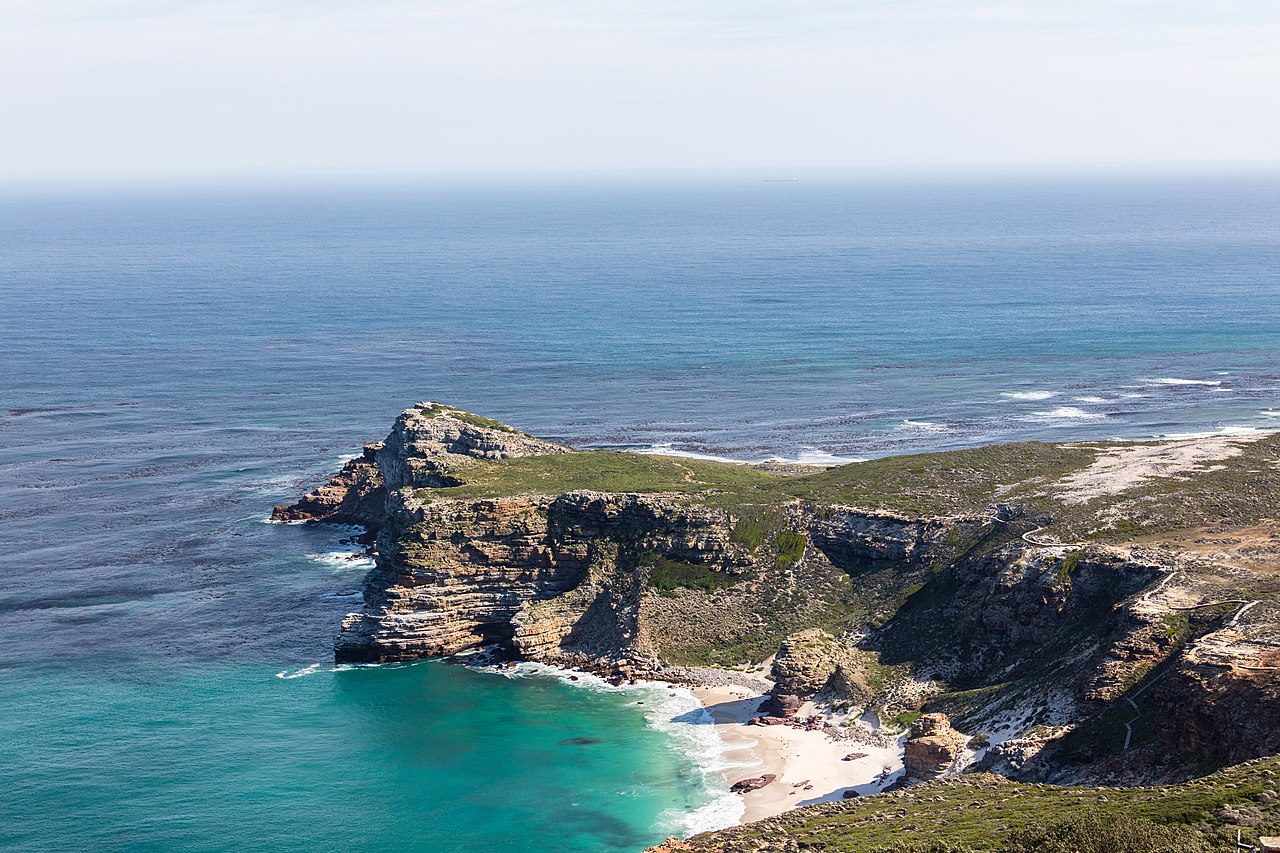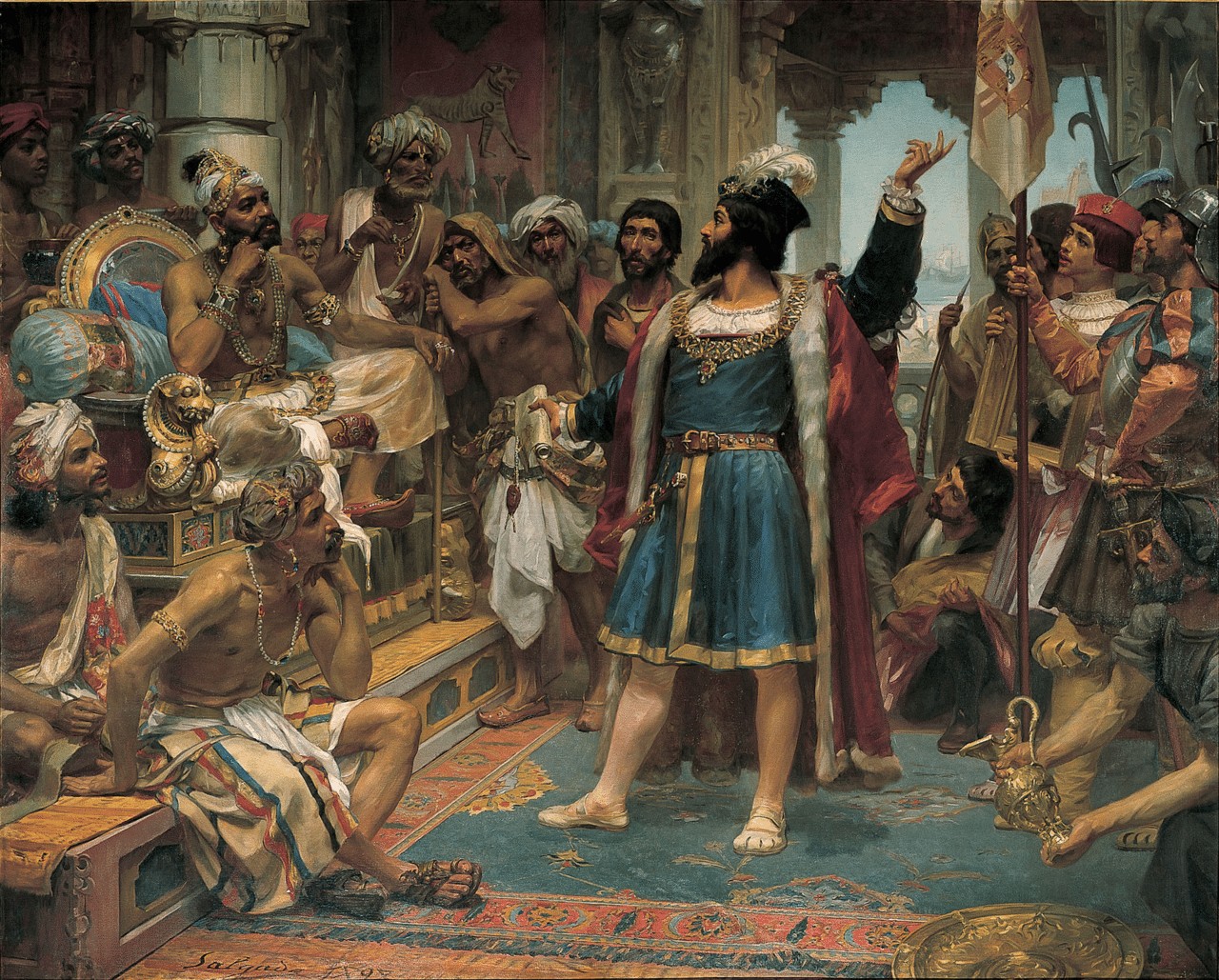1469 - Vasco da Gama is born in Sines, Portugal, to Estêvão da Gama, who was the commander of the fortress in his hometown of Sines.

1480 - Vasco da Gama joins the Order of Santiago and improves his standing. The master of the order would become King John II of Portugal. King John II would eventually reignite Henry the Navigator's plans and continue his push south to find a route to India.
1492 - Da Gama begins to gain a reputation as a great sailor and warrior when he defeats the French in the Algarve region.
First Voyage for Vasco Da Gama
July 8, 1497 - King Manuel sponsors Vasco to sail around the southern tip of Africa. He leaves with 4 ships.
November 4, 1497 - He rounds Sierre Leone and makes landfall on the west coast of Africa.
December 16, 1497 - He makes it to the Cape of Good Hope, which is where Bartolomeu Dias had anchored previously. Here, he would journey where no other European had been before.

March 29, 1498 - in the vicinity of Mozambique Island. The Arab-controlled territory on the East African coast was an integral part of the network of trade in the Indian Ocean.
Fearing the local population would be hostile to Christians, the famous explorer impersonated a Muslim and gained an audience with the Sultan of Mozambique.
With the paltry trade goods he had to offer, the explorer was unable to provide a suitable gift to the ruler. Soon, the local populace became suspicious of da Gama and his men. Forced by a hostile crowd to flee Mozambique, da Gama departed the harbor, firing his cannons into the city in retaliation.
April 7 - 13, 1498 - Became the first European to visit the dock at Mombasa. His visit was brief due to hostilities in the area.
April 14, 1498 - Vasco da Gama sailed into the friendlier port of Malindi, whose leaders were having a conflict with those of Mombasa.
There, the expedition first noted evidence of Indian traders. Da Gama and his crew contracted the services of a pilot who used his knowledge of the monsoon winds to guide the expedition the rest of the way to Calicut, located on the southwest coast of India.
May 20 - August 29, 1498 - The fleet arrived in Calicut, reaching their final destination. Vasco da Gama visited the King of Calicut but did not impress him. The King did not believe him to be a royal ambassador but a pirate. Da Gama fled but took with him the Calicut military and 16 fishermen by force.
The fleet initially inched north along the Indian coast and then anchored in at Anjediva island for a spell.

October 3, 1498 - The fleet left Anjediva to cross the Indian Ocean. On the outgoing journey, sailing with the summer monsoon wind, da Gama's fleet crossed the Indian Ocean in only 23 days; now, on the return trip, sailing against the wind it took 132 days.
January 2, 1499 - They passed the coastal Somali city of Mogadishu but did not stop. It was the first time they had seen the city, which was under the control of the Ajuran Empire. An anonymous diarist of the expedition noted that it was a large city with houses four or five stories high, big palaces in its center, and many mosques with cylindrical minarets.
January 7, 1499 - Da Gama made it to Malindi, but not without a cost. Half of his crew had died, and many were afflicted with scurvy. He ordered one of his three ships to be sent to sea and dispersed the remaining crew.
March 20, 1499 - Sailing began to go smoother, and they rounded the Cape of Good Hope. They would not see trouble until Vasco da Gama's brother became seriously ill.
April 25, 1499 - August 1499 - The two ships make it to the West African coast, and they continue to Cape Verde, where Nicolau Coelho's Berrio separated from Vasco da Gama's São Gabriel and sailed on by itself.
The Berrio arrived in Lisbon on 10 July 1499, and Nicolau Coelho personally delivered the news to King Manuel I and the royal court, then assembled in Sintra. In the meantime, back in Cape Verde, da Gama's brother, Paulo da Gama, had become deathly sick.
Da Gama elected to stay by his side on Santiago island and handed the São Gabriel over to his clerk, João de Sá, to take home. The São Gabriel under Sá arrived in Lisbon sometime in late July or early August.
Da Gama and his sickly brother eventually hitched a ride with a Guinea caravel returning to Portugal, but Paulo da Gama died en route. Da Gama disembarked at the Azores to bury his brother at the monastery of São Francisco in Angra do Heroismo and lingered there for a little while in mourning.
August 29, 1499 - A still somewhat grieving Vasco da Gama took passage on an Azorean caravel and finally arrived in Lisbon. He was given a hero's welcome and showered with much praise.
Second Voyage for Vasco da Gama
February 12, 1502 - In response to Pedro Alvares Cabral's failure to secure a treaty with Calicut and initiate a conflict, Vasco da Gama launched the 4th India Armada from Lisbon.
October 1502 - September 1503 - Vasco da Gama left Lisbon with victory in mind. Once he reached eastern Africa, he opened contact with the East African gold trading port of Sofala and reduced the sultanate of Kilwa to tribute, extracting a substantial sum of gold.
He encountered a ship of Pilgrims traveling from Calicut to Mecca and lit the ship on fire, forced some to convert to Christianity, and plundered their gold.
He next moved to Calicut, where much violence followed. After the Zamorin did not meet his demands, da Gama used acts of brutality to instill fear. He then began to bombard the city with his ships, causing tremendous damage. The Zamorin, in response, summoned his fleet and sent them to meet the Portuguese. Vasco da Gama was a proven naval commander and defeated the fleet.
He then loaded his fleet with spices and left behind a small fleet to harass Calicut shipping. He returned to Portugal but did not brought the Zamorin to submission, which did not sit well with King Manuel I.
1519 - After sitting dormant and unused for almost two decades due to his failure to bring the Zamorin to submission, Vasco da Gama followed the example of Ferdinand Magellan and threatened to defect to the Crown of Castile.
After years of ignoring his petitions, King Manuel I finally hurried to give Vasco da Gama a feudal title, appointing him the first Count of Vidigueira, a count title created by a royal decree issued in Évora.
After a complicated agreement with Dom Jaime, Duke of Braganza, who ceded him on payment to the towns of Vidigueira and Vila dos Frades.
The decree granted Vasco da Gama and his heirs all the revenues and privileges related, thus establishing da Gama as the first Portuguese count who was not born with royal blood.
Third Voyage for Vasco da Gama
April 1524 - December 24, 1524 -After the death of King Manuel I, King John III took the throne and made Vasco da Gama a Viceroy and an advisor. He also sent da Gama on his third voyage to India.
He set out with a fleet of fourteen ships; Vasco da Gama took as his flagship the famous large carrack Santa Catarina do Monte Sinai on her last journey to India, along with two of his sons, Estêvão and Paulo. After a troubled journey (four or five of the ships were lost en route), he arrived in India in September.
Vasco da Gama immediately invoked his high viceregent powers to impose a new order in Portuguese India, replacing all the old officials with his own appointments. But Gama contracted malaria not long after arriving and died in the city of Cochin on Christmas Eve.

